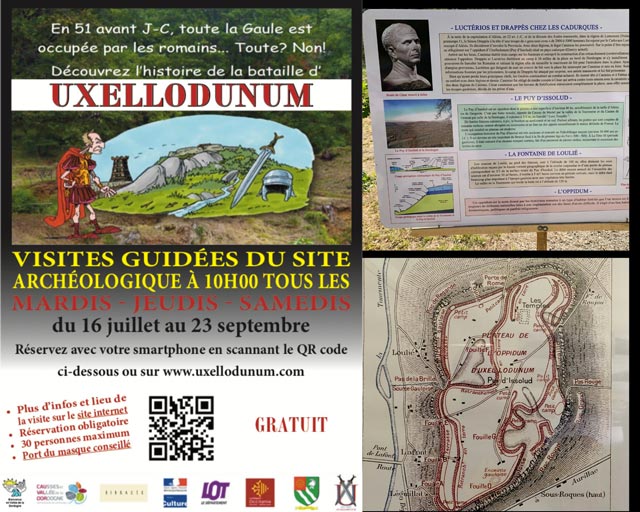
A little bit of history
Julius Caesar had to fight the Bituriges (Berry region), the Carnutes (Orléans region), the Bellovaques (Beauvais region), the Trevires (Belgium) and finally the Pictons, who were massacred in the Lemonum (Poitiers) region. More than 12,000 Gauls were killed. Pursued by Roman troops, the remaining Gauls took refuge in the oppidum of Uxellodunum, where they set up an entrenched camp. Uxellodunum was a high, steep, difficult-to-reach site with an unobstructed view of the surrounding area, heavily protected by fortifications and earthworks, and was home to between 2,000 and 5,000 heavily armed, determined men who raided the entire region to stock up on supplies, while Caesar's Roman legions, numbering around 70,000 men, were ready for battle, organised, structured and trained in combat, with their encampments surrounding the oppidum.
Caesar saw that the fortifications were completely surrounding the town and decided to deprive the Gauls of water. At the foot of the ramparts, he had an 18m-high earthwork topped by a 10-storey tower (27m high) built to prevent the Gauls from replenishing their water supplies. These works were a decoy, a diversion, because Caesar had another strategic plan: to dig underground galleries, out of sight of the defenders, to dry up the springs. Despite fierce fighting and the burning of the tower, the Romans achieved their goal. The Gauls, deprived of water, believed themselves abandoned by the gods and surrendered.
Caesar was merciless. He cut off the hands of all those who had taken up arms, but let them live. This cruelty was an example to prevent a new insurrection. The fateful date of 1 March 50 BC was the end of his proconsulship, and he wanted to return to Rome victorious. A "collection of brigands" had almost jeopardised the rest of his political career. This battle in 51 BC lasted around two months, from mid-July to mid-September.
Gaul was now subjugated and became a Roman province.
This summer, the site and galleries are open every Tuesday, Thursday and Saturday at 10am, and the tours (free of charge) given by the members of the association "Les amis d'Uxellodunum" (the Friends of Uxellodunum) are remarkable, taking you right to the heart of the battle.
Further information and bookings at : www.uxellodunum.com






